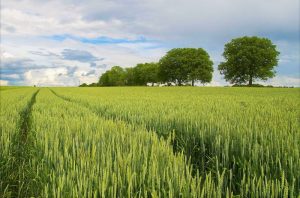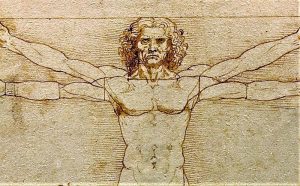Atmospheric pollution
Air pollution in urban areas is generated by transport, industry and energy production. But it is not only a visual or olfactory problem, but also one of the main health risks in the world. Indeed, according to the World Health Organization, air atmospheric pollution is responsible for the premature death of 7 million people each year.

Related topics
Noise pollution, environmental pollution, air pollution, water pollution, visual pollution, light pollution, soil pollution
What is atmospheric pollution?
Atmospheric pollution means the presence of impurities or the increase of certain substances in the atmosphere that modify air composition. These pollutants can not only be harmful to human health but can also negatively affect the environment, natural resources, living organisms and ecosystems.
Causes of atmospheric pollution
- Fuels and transport: The burning of fossil fuels such as oil, coal and natural gas emits carbon monoxide and Sulphur oxide. It is precisely the means of transport such as vehicles, trucks and airplanes that emit large amounts of carbon monoxide, which is harmful and negatively alters the environment and its ecosystems.
- Industrial installations: this pollution is mainly due to the fuels used by many factories to operate their machines. In addition, industrial waste has an impact not only on-air pollution, but also on soil pollution. The pollutants emitted by industrial installations are mainly Sulphur dioxide, dust, metals and volatile organic compounds.
- Deforestation: This has an indirect impact on the environment since trees absorb carbon dioxide from the atmosphere for photosynthesis and produce oxygen. This helps regulate the natural greenhouse effect. As there are fewer forests, there will be a greater amount of carbon dioxide in the atmosphere. In addition, forests are often deforested with fire and this action also increases the amount of carbon dioxide.
- Waste incineration: All types of combustion generate emissions and the burning of waste, whether carried out by private individuals or by specialized facilities, constitutes an atmospheric pollution agent. The pollutants released in this case may contain metals, hydrochloric acid and dioxins.
- Agriculture: The agricultural sector is responsible for part of the atmospheric pollution, using machinery but also because of the products used for agricultural activities, phytosanitary products and ammonia.
- Household activities: When plant protection products, paints, household products or when cooking are used, air pollutants such as volatile organic compounds are emitted.
Effects of atmospheric pollution
Air quality can have repercussions on our health or on the environment with immediate or long-term effects. These effects will vary according to the chemical composition of the pollutants, the size of the particles, the exposure degree, among other variables.
Health effects
- Respiratory ailments since the respiratory tract is the main point of entry for air and, therefore, for pollutants.
- Digestive ailments since contaminants present in the air can contaminate our food.
- Cutaneous affections.
Effects on the environment
- In cultivation areas, ozone in large quantities causes the appearance of spots or necrosis on the surface of the leaves and causes low yields depending on the type of crop.
- In the constructions, the pollutants deteriorate the materials of the facades, especially those that are constructed in stone, cement and glass, by dirt and corrosive actions.
- Ecosystems can be negatively affected by air acidification and eutrophication. Indeed, some pollutants, washed away by rain, subsequently contaminate soils and water, disturbing the chemical balance of plants. There are also other types of pollutants that can change the distribution of species and seriously affect biodiversity.
- Smog is one of the consequences of atmospheric pollution. It comes from a mixture of pollutants consisting mainly of ozone and final particles resulting from the combustion of fossil fuels.
- Acid rain is produced by Sulphur oxide that rises into the atmosphere. This can weaken the flora of our planet by acidifying the soil. These affect the development of diseases and can even cause some species to become sterile. The fauna is also severely impacted by this phenomenon.
Prevention
There are certain measures that can be taken, not only at the governmental level but also at personal level, to prevent or reduce atmospheric pollution.
- As for transport, when buying a vehicle, you can choose a car model adapted to personal needs that consumes less. Next, it is important to pay attention to vehicle maintenance by frequently checking the oil filter, gasoline filter, air filter, among other vehicle components. According to statistics, a car with poor maintenance can pollute 50 times more than a car in good condition. On the other hand, the use of the car can be minimized if possible.
- Avoid the use of solvent-based products, such as turpentine, gasoline, pesticides, among others. If their use is imperative, it is essential to handle them very carefully and close the containers that contain them hermetically.
- Prefer the use of recycled products because they allow to save the amount of waste destined to incineration, a cause of atmospheric pollution.
- Avoid smoking.
Sources of atmospheric pollution
- Natural atmospheric emissions: Forest fires or volcanoes can cause emissions of polluting gases.
- Anthropogenic emissions: These are emissions caused by human activity, such as industrial installations, transport, garbage incineration or agricultural activities.
Types of atmospheric pollution
- Local atmospheric pollution: This comes from nearby sources such as industrial facilities or vehicles. The most common pollutants on this scale are: particles, nitrogen oxides (NOx), sulphur dioxide (SO2), carbon monoxide (CO), volatile organic compounds (VOCs), polycyclic aromatic hydrocarbons (PAHs) and metals.
- Regional atmospheric pollution: This originates from more complex physical and chemical phenomena from primary pollutants such as those mentioned above or secondary pollutants such as ozone (O3). The term regional is used because it covers a larger area.
- Global atmospheric pollution: In this type of pollution, there are substances involved in the phenomena of climate change (greenhouse gases and CO2).
Examples
Smog in Pakistan
In this country, the environmental situation is worrying. Pakistan ranks third in the world in terms of the number of victims of pollution, with 125 000 deaths per year. Pollution particularly affects the air. It should be noted that this is a country with thousands of factories that emit their toxic gases into the atmosphere. In the autumn of 2016, there was a large cloud of smog in the country and the following year, the phenomenon was repeated, causing respiratory diseases in the population such as asthma, allergic conjunctivitis and respiratory failure.
The case of Saudi Arabia
According to some studies, this country has one of the highest levels of atmospheric pollution in the world. Carbon emissions are very high. Unfortunately, in this country there is not the best disposition for the use of renewable energies.
Airplanes
Although the energy efficiency of aircraft has improved over the years, it is important to emphasize that aircraft contribute more to atmospheric pollution than other means of transport. They consume more fuel per kilometer per person than other means of transport. On the other hand, aircraft expel harmful gases directly into the atmosphere which makes their action even more harmful.
How to cite this article?
Briceño V., Gabriela. (2019). Atmospheric pollution. Recovered on 3 January, 2025, de Euston96: https://www.euston96.com/en/atmospheric-pollution/









